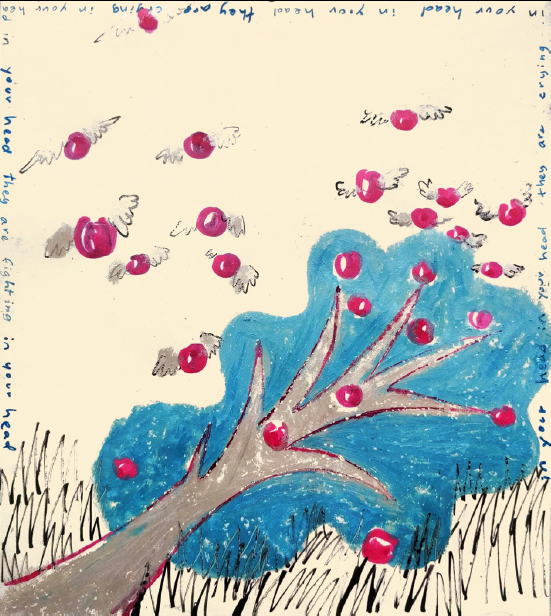Machines Have Lucid Dreams
While the world itself is undergoing intolerable changes, it is at times difficult to imagine the future. Recognising the need for a sanctuary, we created Machines Have Lucid Dreams, a safe virtual environment to process, express, and heal. [1]
As we developed the game throughout the Covid pandemic, we realized our goal was less concerned with the traditional concepts of winning or losing, or puzzle solving. [2] Instead, it presented itself as an opportunity for us to critically engage with the problems of modern existence – climate anxiety, isolation, and grief – themes that resonate with the ‘Fevers, Frets, and Futures’ conference. Inspired by point and click games from our childhood, like Full Throttle [3] and Grim Fandango [4], we made the game using a 1997 game engine, Adventure Game Studio, to rekindle feelings of familiarity and safety.
Seeing Machines Have Lucid Dreams as an ecosystem, we branched out to create an online performance [5] that reconsiders computer code as poetry – words to be read aloud and accompanied with live music.
On a warm sunny morning, we pointed our webcam at a nice patch of sky through the studio window for 15 minutes over Zoom. Over a lush virtual landscape, the washing line character from the game begins his/her recital of poetry in C++, the common language between all the in-game characters. Computational symbols and words are treated as equals. Sometimes full sentences of English can be heard in the code, which the washing line helpfully recreates in subtitles. Music swells beneath, improvised live on instruments, as clothes sway back and forth in a simulated breeze.
We started playing on our instruments without knowing how it would begin or end. These limitations were designed with the intention to encourage listening to each other and to form natural reciprocity, an attitude that is more important than ever to adopt considering the current state of the world. [6] For us, these performances have less to do with the traditional idea of composing a piece of music, but more as a journey of establishing mutual understanding and finding equilibrium. [7]
The more we listen to each other as we play, the easier our improvisation connects. This EP [8] documents several serendipitous moments of synchronicity in our musical conversations, with the title of the tracks indicating the duration of ‘connection’ in one setting.
References:
[1] Kashdan, Ivan, and Cheung, Blythe. 2022. Itch.io: Machines Have Lucid Dreams. 16 June. https://ivankashdan.itch.io/mhld. [2] Sylvester, Tynan. 2013. Designing Games: A Guide to Engineering Experiences. 10. Beijing: O’Reilly. [3] LucasArts. 1995. Full Throttle. April 30. [4] Lucasarts. 1998. Grim Fandango. October 30. [5] Slade UCL. 2021. Colour and Poetry Symposium and online exhibition: Colour/Collage/Poetry. 19 March. https://www.ucl.ac.uk/slade/events/colour-and-poetry-symposium-2021. [6] Kimmerer, Robin Wall. 2013. Braiding Sweetgrass. Minneapolis, Minn: Milkweed Editions. [7] Orion, Tao. 2015. Beyond the War on Invasive Species: A Permaculture Approach to Ecosystem Restoration. Chelsea Green Publishing. [8] Kash & Germ. 2020. Bandcamp: Elements of Construction EP. November 4. https://kashngerm.bandcamp.com/album/elements-of-construction.


